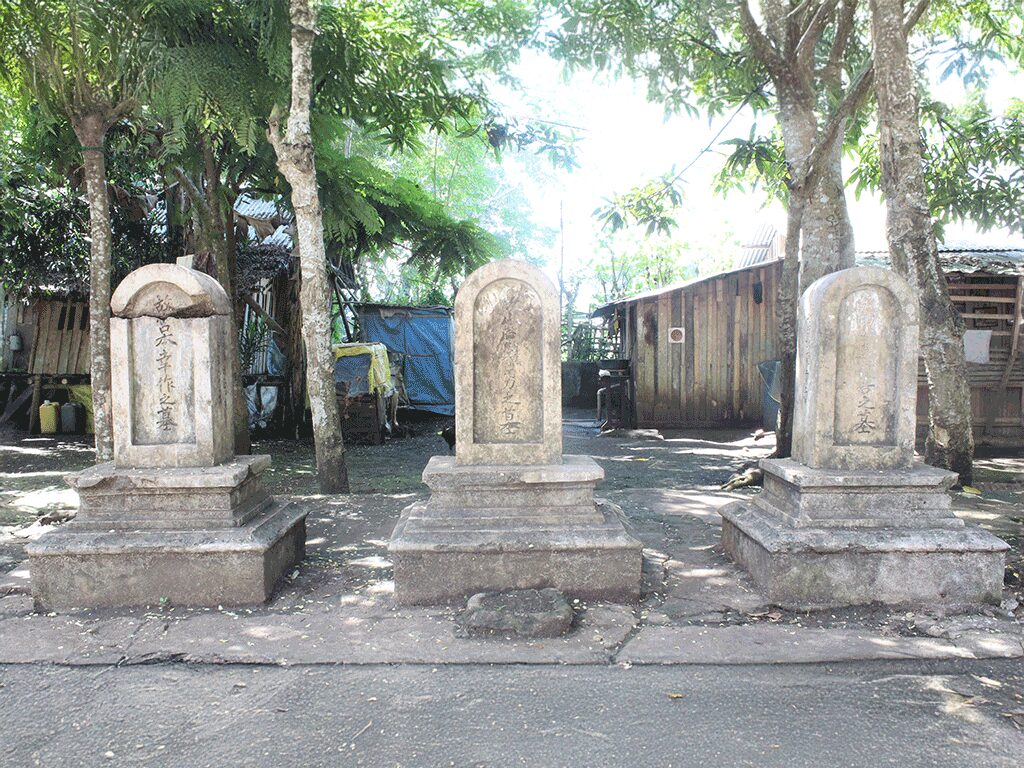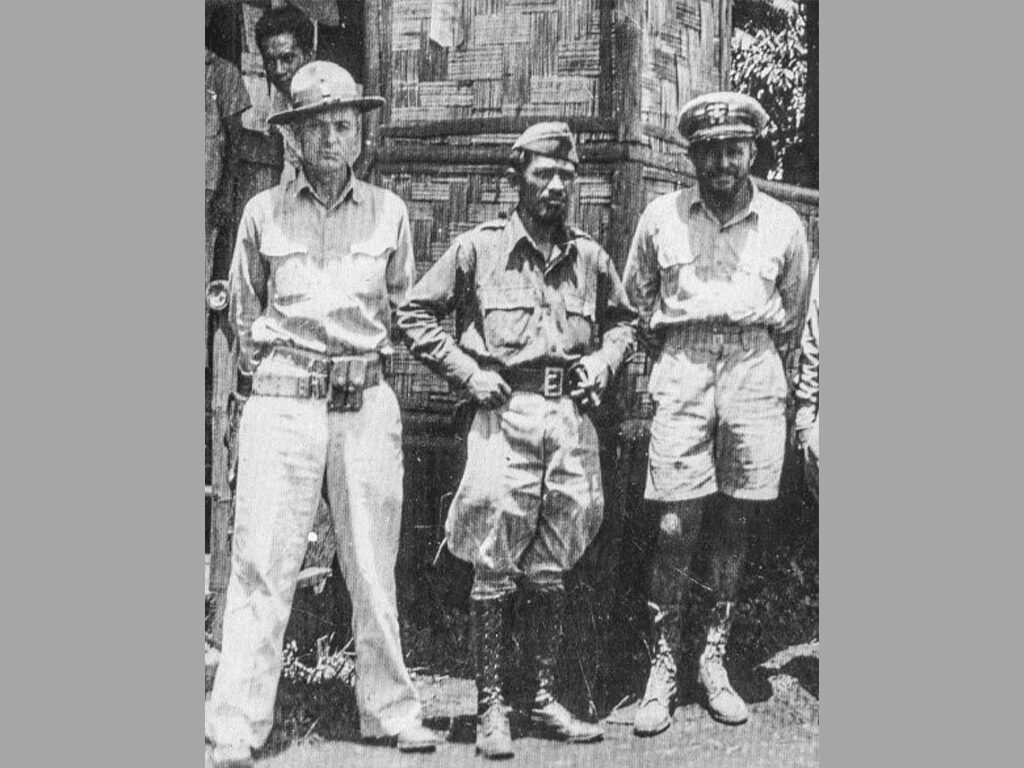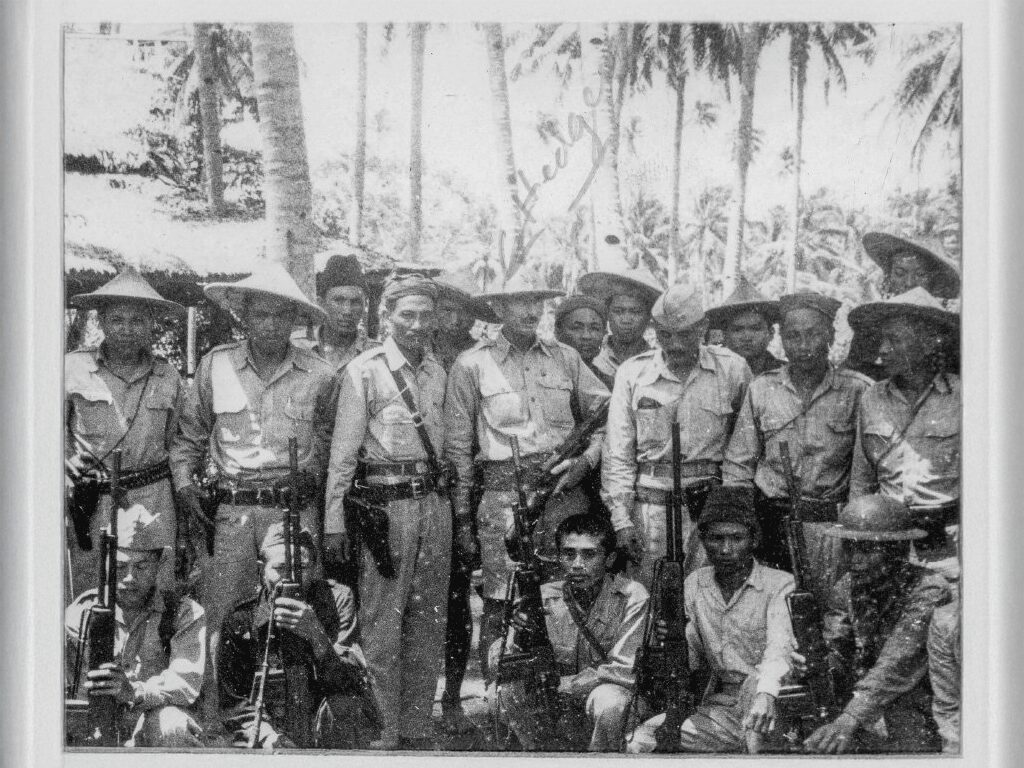The Second
World War
1900

1941-1946
The Black Teeth Warriors

1941 - 1946
The Bolo Battalion: Muslims Armed Resistance in Mainland Mindanao

1942
Battle of Tamparan

The Black Teeth Warriors
1941-1946
The Black Teeth Warriors
Despite their discomfort against the American occupation, Muslim freedom fighters in the Sulu archipelago known as the Black Teeth Warriors fought alongside the American and Filipino soldiers when Japan invaded the country in 1941 and defeated the Japanese.
When Japan invaded the Philippines, Jolo was used as the launching pad for her invasion of oil-rich British North Borneo and the Dutch East Indies. About twenty thousand Japanese soldiers were sent to the Sulu archipelago in 1941. The Tausug, Sama, Chinese, and Christians in the Sulu archipelago joined the guerilla movement to defend the region. At first, the resistance was defeated by the massive military operations and bombardment by the Japanese. After breaking into several units, freedom fighters known as the Black Teeth Warriors (teeth turned black from betel nut chewing), took their time in gathering intelligence information which led to the sinking by Allied submarines of hundreds of thousands of Japanese shipping tonnage and scores of transport ships loaded with enemy troops bound for the battlefronts in the southern Pacific.
When the supply of ammunitions arrived in an American submarine, the Black Teeth Warriors fought back, defeated the enemies, and liberated Tawi-Tawi and Sulu from the Japanese. During the final phase of the Sulu campaign, only few Japanese out of 5,000 survived. This defeat was written by one of the Japanese survivors, Akiyoshi Fujioka. In his A Diary of a Defeat, Fujioka described the brutality of the freedom fighters and recalled how they sliced the livers and gold teeth of the Japanese soldiers. In one month after they came to the island 1,000 Japanese were slaughtered.
Sulu freedom fighters also aided the resistance against Japanese in Jesselton, Kota Kinabalu in North Borneo led by a Chinese, Albert Kwok. Some of them were also sent to Bataan. A Tausug from Maimbung, Sulu, asserted that he had once saved President Marcos when he was a military officer in Bataan. This was confirmed by his wife Imelda when she denied the accusation that President Marcos was the mastermind of the Jabidah Massacre. She said her husband could not do such a thing since he was once saved by a Muslim soldier in Bataan during the Japanese-American war.
Sources:
Tregonning, K. G. 1965. A History of Modern Sabah (North Borneo 1881-1963). 2nd Edition, Published for the University of Singapore by the University of Malaya Press.
Espaldon, Ernesto M. 1997. With the Bravest: The Untold Story of the Sulu Freedom Fighters of World War II. Quezon City: Espaldon Virata Foundation, Inc.
Majul, Cesar Adib. 1985. The Contemporary Muslim Movement in the Philippines. Berkeley, CA: Mizan Press.
Read More

The Bolo Battalion: Muslims Armed Resistance in Mainland Mindanao
1941 - 1946
The Bolo Battalion: Muslims Armed Resistance in Mainland Mindanao
In Mainland Mindanao, Muslims armed resistance group called the Bolo Battalion led by Salipada Pendatun had successfully liberated Mindanao from Japanese six months before US forces led by General McArthur landed in Leyte. Read More
Battle of Tamparan
1942
